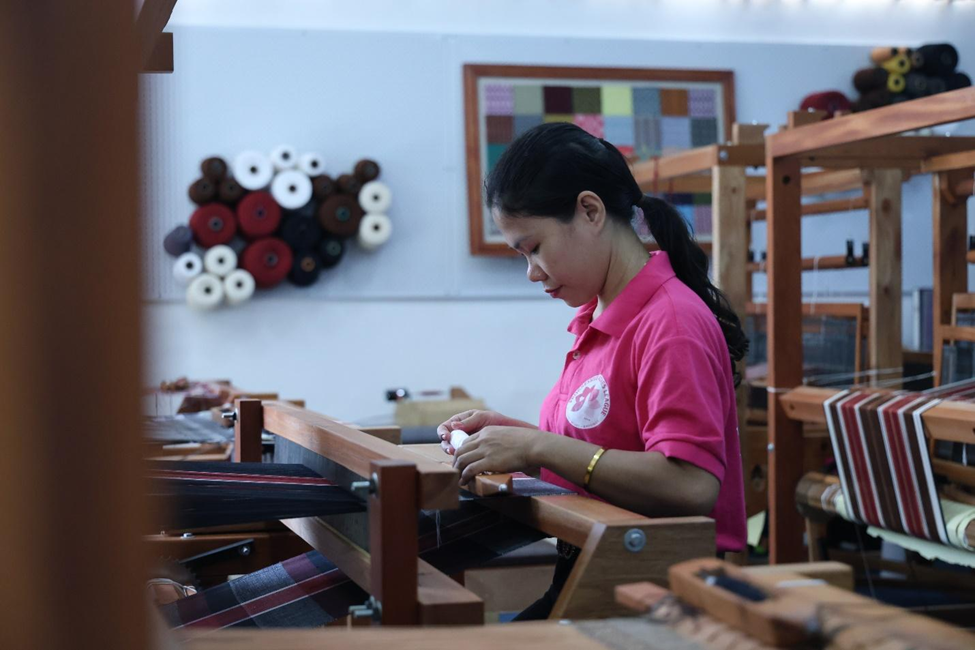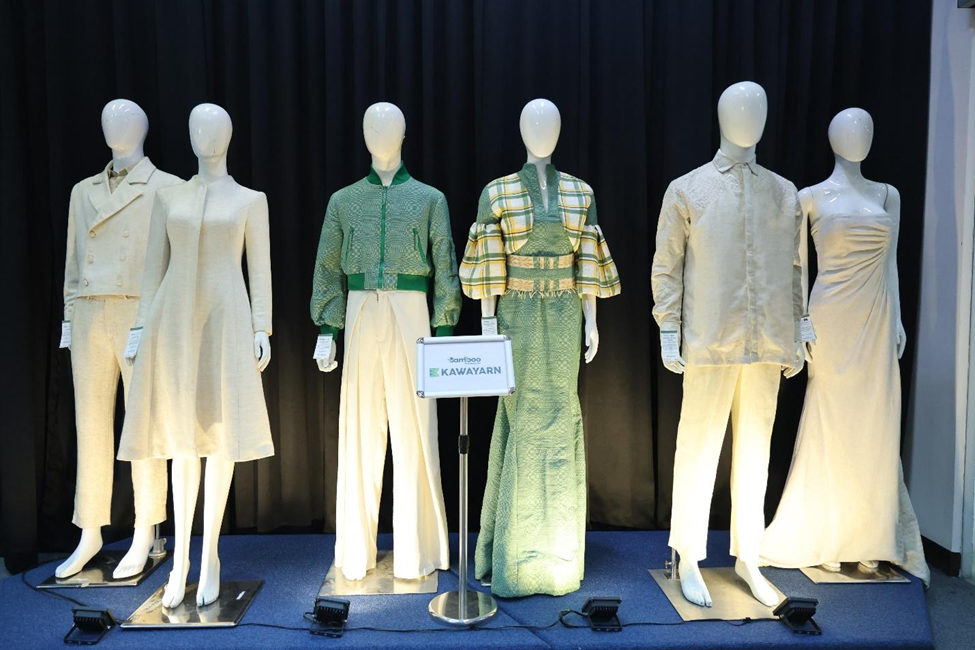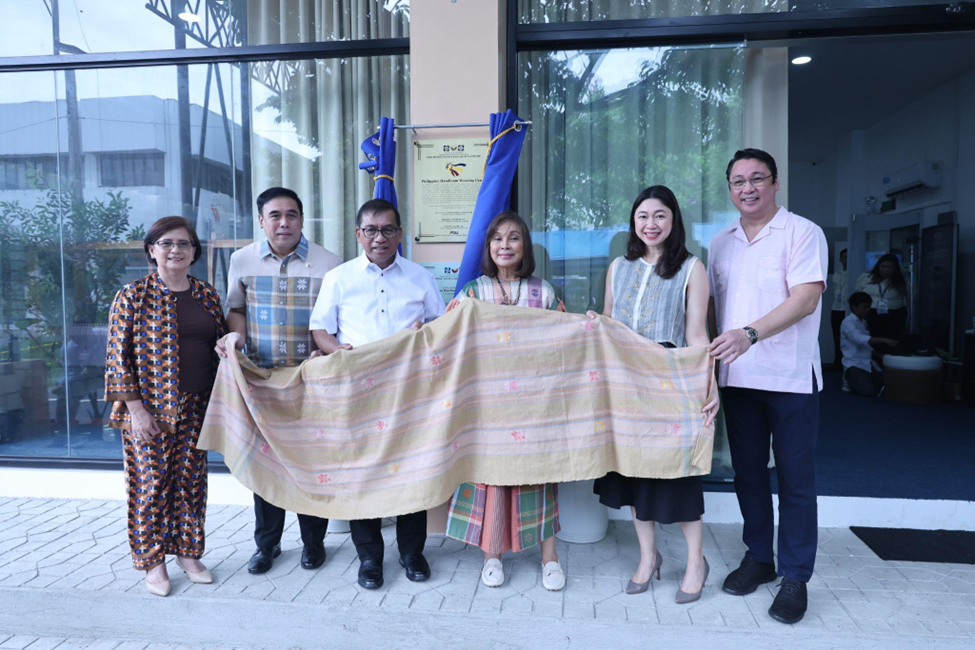The newly established Philippine Handloom Weaving Center in Taguig City is eyed to create more livelihood opportunities which may expand the local weaving communities and the textile industries in the country, according to Senator Loren Legarda.
Legarda, along with science Secretary Renato U. Solidum Jr. led the recent launch of the Philippine Handloom Weaving Center at the Department of Science and Technology-Philippine Textile Research Institute (DOST-PTRI) Grounds.
“Today we celebrate the threads that bind our culture, resilience, artistry and history as Filipinos. As we inaugurate the Philippine Handloom weaving center, we are not only breathing life into the weaving industry, but we also continue to provide a lifeline to our weavers and farmers,” Sen. Legarda said.
Handloom weaving is traditionally passed down through a method of creating textiles using a loom powered by hand, rather than by machine, with distinct regional styles and symbolic patterns. This process often results in unique and exquisite textiles, reflecting cultural heritage and artistic skill.
The Philippine Handloom Weaving Center is envisioned as a hub for innovation in the country’s handloom weaving sector. It aims to advance weaving techniques and technology while preserving the cultural heritage and craftsmanship of Filipino weavers.
On the other hand, to empower weavers and develop the local textile sector, Legarda filed the Senate Bill no. 241, or the Philippine Handloom Weaving Industry Development Act of 2022 in the 19th Congress.
She is also pushing for the enactment of the Philippine Tropical Fabric bill, which mandated the use of locally made fabrics in government uniforms.
However, Legarda said that the bill was not given a special treatment nor priority because not everyone understands, supports or recognizes the initiative.
“They might think it’s a fashion thing, which definitely is not. That’s why I keep on saying, this goes beyond fashion or everyday wear. It’s really a livelihood, up to the farmers,” Legarda said.
Meanwhile, according to the DOST-PTRI, the center will also lead initiatives in modernizing weave design, drafting, and analysis; advancing handloom engineering technologies; and promoting intellectual property protection and these efforts will be carried out in collaboration with the 24 Regional Handloom Weaving Innovation Hubs established across the Philippines.
“Our textile interventions at DOST intentionally create channels where each one is given space to contribute, so that they may have more impact than when doing things alone,” Solidum said.
Moreover, through skills training and capability-building programs, the center also seeks to formalize handloom weaving as a recognized technical skill, contributing to local employment generation and strengthening the national textile manufacturing industry.
Solidum said that the agency, through the DOST-PTRI’s Textile Academy, is currently in partnership with the Technical Education and Skills Development Authority (TESDA) for the second batch of National Certificate II certification for upright handloom weaving for 20 weavers from all over the country.
The new facility has 10 units of the HL Mach 4.0 (45 inches width, four-harness) and two units of the Therapeutic handloom V2 (25 inches width, four-harness), showcasing DOST-PTRI’s patented technologies in support of weaving modernization.
“Let us continue opening the doors of opportunities for learning, knowledge-sharing, for skills development so that we expand the weaving communities and local textile industries, as we strengthen a tradition that is a symbol of our national pride,” Legarda said.
The DOST-PTRI is the lead textile research and development arm of the Department of Science and Technology. It is mandated to conduct applied research and development for the textile industry sector; undertake the transfer of completed research to end-users or via linkage units of other government agencies; and to undertake technical services and provide training programs.
They are among the many attached agencies of the Department of Science and Technology (DOST) aimed at providing science-based, innovative, and inclusive solutions across four strategic pillars: human well-being, wealth creation, wealth protection, and sustainability. These pillars embody the mantra OneDOST4U: Solutions, Opportunities for All. For more information, visit www.ptri.dost.gov.ph. (By Claire Bernadette A. Mondares, DOST-STII)

Weavers from the Progressive Ladies League of the Philippines show their skills in weaving textiles during the launching ceremony of the new Philippine Handloom Weaving Center at DOST-PTRI. (Photo by Patrick James Lee C. Alfonso, DOST-STII)

Kawayarn? These are sample pieces of clothes handwoven by GAMABA weavers from Pinili, Ilocos Norte, showcased at the Tela gallery of the DOST-PTRI. Made with 70 percent lyocell, and 30 percent bamboo yarns, these masterpieces were designed by Anthony Cruz Legarda. (Photo by Patrick James Lee C. Alfonso, DOST-STII)

(From left to right) DOST Assistant Secretary for Administrative and Legal Affairs Dr. Diana L. Ignacio, DOST-PTRI Director Julius L. Leano, DOST Secretary Renato U. Solidum Jr., Senator Loren B. Legarda, Taguig City Mayor Laarni L. Cayetano, and Philippine Fiber Industry Development Authority (PhilFIDA) Executive Director Arnold “Ali” I. Atienza, led the unveiling of the newly established Philippine Handloom Weaving Center marker on July 07, 2025 at DOST-PTRI grounds. (Photo by Patrick James Lee C. Alfonso, DOST-STII)